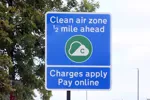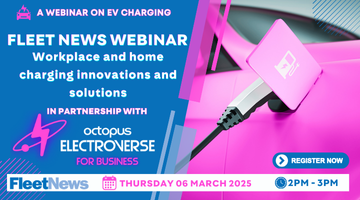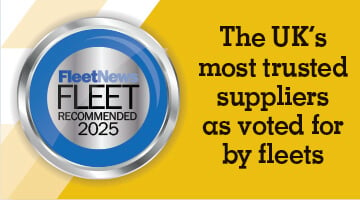Hands up everyone who has seen a 3.5-tonne panel van thrashing down the outside lane of a motorway at 90mph in the past month. Let’s see, one... two... oh, that’s all of you!
It’s a problem that has existed as long as vans have been capable of such speeds and is one that any law-abiding, cost-conscious fleet operator would want to stamp out.
The problems and dangers are obvious. For starters that van is likely to have your logo emblazoned on the side, which will immediately put your company on a negative footing in the eyes of any member of the public who sees it.
It’s illegal and dangerous too, so your drivers are likely either to end up with no licences or injuring themselves and others on the roads. In addition to the obvious safety issues, this will also cost your business money.
Ah yes, the cost. At 80mph a van uses 20% more fuel than at 70mph. That means that if your van does 1,000 miles in a week and uses fuel at 30 miles per gallon, you are wasting £1,561 per year per vehicle. Add to that higher maintenance bills from all the mis-use; these foot-heavy drivers are a serious drain to company profits.
With facts like this you’d imagine that every fleet van on the roads would have some kind of device fitted to prevent unnecessary speeding – after all, there are plenty of them about. However, according to alarm and speed limiter manufacturer Cobra, less than 5% do.
A good telematics system will alert fleet managers to any serious cases of yahoo-ery on the roads when they aren’t looking but, increasingly, suppliers are suggesting that these systems should be used in conjunction with a speed limiter, which will cut out any cases of motorway speeding at the drop of a hat.
One of the reasons we suspect that more limiters aren’t fitted is the problem of driver (and, therefore, union) objection. Here, companies often tread carefully in fear of how frustrated staff might treat their vans.
But this view is at variance with that of Mark Cartwright, project manager at the Freight Transport Association, who says: “Give a driver a van with a speed limiter and after a couple of months I guarantee he’ll say he prefers it. He’ll realise that journey times are the same – you don’t get there any quicker by driving too fast – and that there are major fuel savings to be gained.”
And ultimately, it is the company’s van being driving for work purposes. It’s up to you what safety and cost-related equipment you install.
The challenge
It’s all very well to talk about savings and safety: how do speed limiters perform in real life? Fleet Van decided to find out.
We ordered a Volkswagen Transporter Sportline, had a Cobra 56mph speed limiter fitted, drove on a 260-mile test route, had the limiter removed and did the trip again, to see for ourselves – and for the benefit of our readers – if the aforementioned theories are true.
The Sportline is perfect for this experiment – the clue is in the name. With 180bhp under its bonnet, this van flies like the wind and begs the driver to floor the throttle and have fun. Could your staff be tempted to break the speed limit in one?


















lesley Welsh - 04/09/2014 09:30
Interesting article and relevant to our company. We definitely need to look further into this